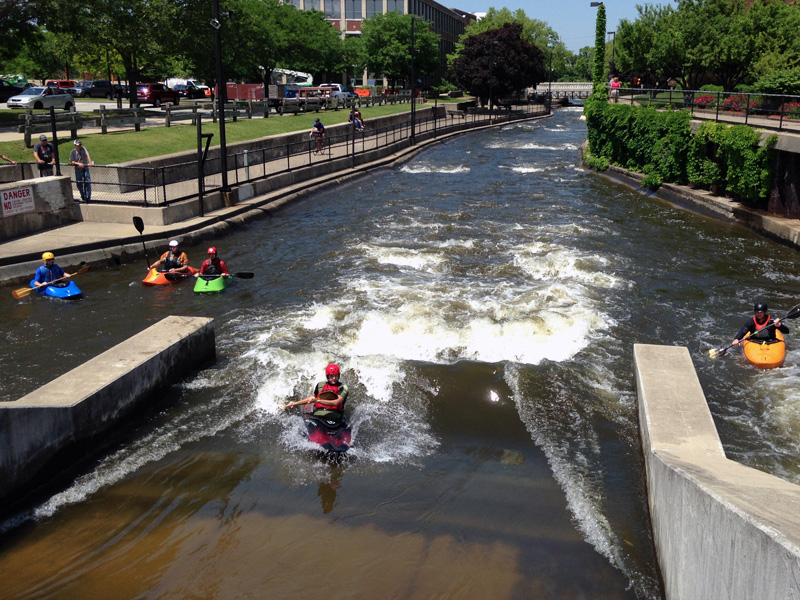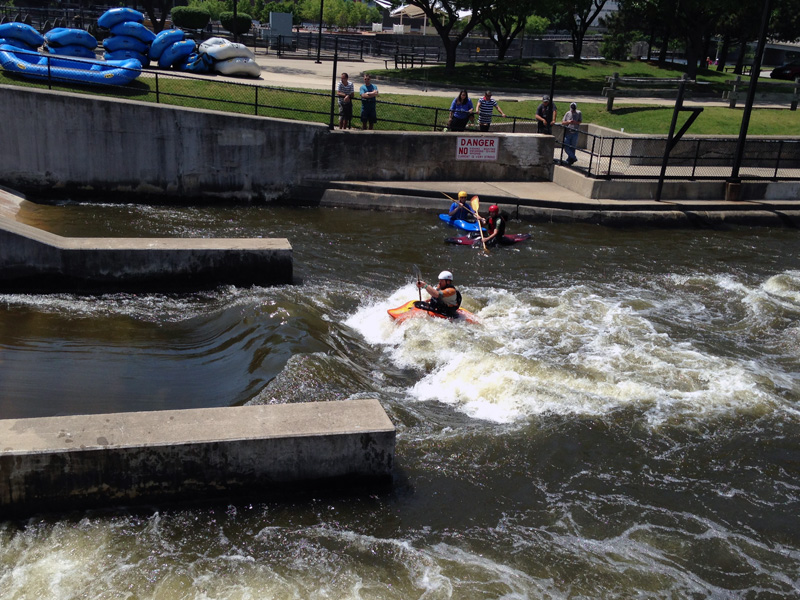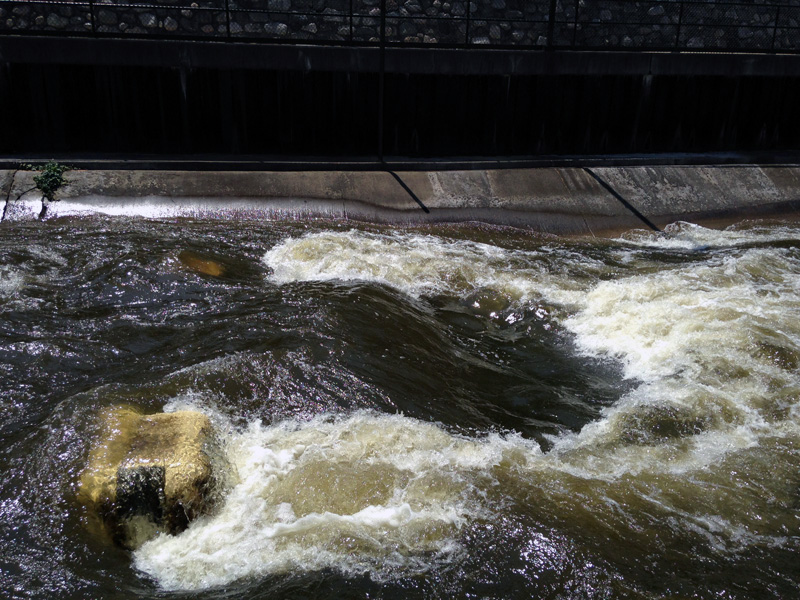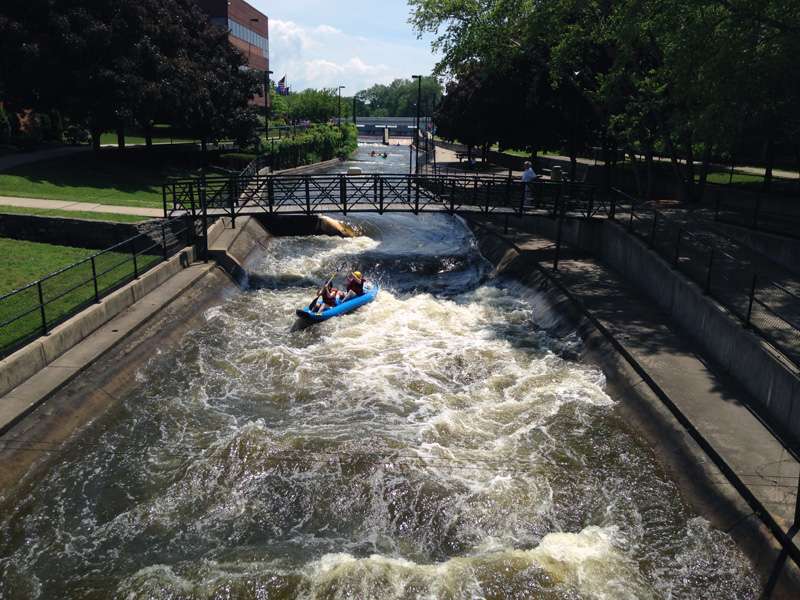Packrafting the East Race Waterway
My rafting trip in West Virginia last summer was one of my most ambitious to date, and was easily one of my most rewarding. It was the first time I had ever been in whitewater, and I realized pretty quickly that it is an unbelievable rush to hit a wild run of rapids. Since then, I’ve been scoping out other rivers closer to home, hoping to find something worth checking out. Unfortunately, the Midwest doesn’t have very many, save a few Class II-III rivers in central and southern Illinois, northern Wisconsin, and Upper Peninsula, Michigan.
But nothing around Chicago. And even though it’s still great to get out to a suburban river with my packraft, most of the flatwater rivers here are boring at best. So I left the city a few weeks ago on a train to paddle the East Race Waterway, an artificial whitewater run in South Bend, Indiana. It turned out to be a fine exception in an otherwise uneventful area for water sports.
Originally a $5 million project, the waterway was a two year undertaking that the city finally opened to the public in 1984. Since then, it has drawn approximately 270,000 visitors, many of whom were probably Midwestern paddlers like myself, who were looking for a quick and easy whitewater fix. It flows swiftly at 500cfs and a knot speed of 10 to 15 down a flat concrete channel for just short of a half mile through downtown. It is rated at Whitewater Class I-II, although I thought some of the bigger holes were borderline III. But with there being virtually no hazards in the river at all, and the fact that trained whitewater rescuers wait by the bigger spots with throw ropes, you would have to actually try to get hurt. Essentially, it is a skate park for whitewater rafting.
They offer rafting rides for $5 per person per run. Or if you have your own kayak, you can pay $15 for the day. I brought my packraft with me on the train, walked to the river, and spent two afternoons riding down the channel.
I was surprised at how swiftly it went, and how big some of the holes were. A lot of kayakers were out surfing the playwaves, but my raft can’t really do that, so I just hit the hydraulics head on. With enough brunt force, I could usually slam right through them. At the end of the run, I paddled through a wave train and past a big eddy to the take-out, carried my raft upstream, and got back in.
A lot of people asked me about my packraft, since they aren’t commonly used in the Midwest. Yes, it is indeed a badass wilderness boat that fits into a backpack, it is made of a high quality, durable, lightweight polyurethane, it kicks ass in whitewater, and yes, I can take it anywhere walkable without having to coordinate a shuttle ride.
I was asked almost every time without fail if I can roll the thing. My usual answer to that question is sort of. There isn’t enough leverage with the raft alone to respond to the hip snap needed to roll a capsized boat. I would have to mod the thing with thigh straps, which I hear also improves its maneuverability in technical runs. Other packrafters have been able to roll very effectively using this approach. For now, I just wet-exit like I did in the video and jump back in.
I absolutely recommend this waterway to anybody who is as sick of flatwater as I am. Especially if you’re a beginner and need a safe place to practice in moving currents. Even if you’re not into serious paddling, you can pay $5 to borrow one of the bigger, more stable rafts and float down with a few other people. The waterway is open every weekend afternoon through August.





